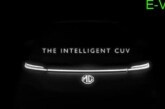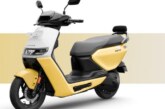
Electric Car works- Electric cars are all in the news currently. Its unique features eco-friendly, high speed and no noise attracting the customers globally. Unique features make Electric Vehicles different from other gasoline Vehicles as it creates very less amount of air and noise pollution.
You may wonder how the EV differs from the other vehicles. Let me explain to you the differences:
- The gasoline engine is replaced by an electric motor.
- The controller is the power source for the electric motor and
- The controller gets its power from an array of rechargeable batteries.
Electric Car works
Vehicles which are powered by fuel cells are electric cars. fuel cells are something which generates the electrical power without noise and pollution whereas other gasoline vehicles which use fossil fuels creates a lot of dangerous gases that harms the environment.
Due to the exhausted pipes which are lined up with the fuels, coolant hoses and intake manifold looks like a plumbing project in gasoline engine whereas in EV you can see a wiring project.
Now you know the differences between the EV and other Vehicles, let’s look at how do they work.
How does Electric Car work?
Electric Car works-It is similar to a normal car when you look it from outside its hard to find whether it is EV when you start driving it you can feel as it is quiet and there will be a difference in speed.
The main four components which run the EV car-Electric Car works
1. The Batteries
2. The Controller
3. The Motor and Regeneration
4. Charging
1. Batteries:
The electric energy is used to fill up Lithium-ion batteries which are used in the car. They are similar to our laptop or smartphone but the size will be big which stores electrical energy.
This is placed at the bottom of the car as they are heavy and reduces the center of gravity making it easier to drive.
2. The controller:
It intelligently turns the electricity on and off around 15,000 times per second, depending on the throttle position. In simple words, it regulates how much the electricity should pass.
3. The Motor and Regeneration:
The motor is used to convert electric energy into kinetic energy and in most cars the regeneration which can be called as “regenerative braking”, which recovers the energy and puts it back into the battery which you usually waste to slow down the vehicle. Recharges your batteries when you are not on the gas.
4. Charging:
Electric cars need to be recharged as any other vehicles need to be filled up by fuels. For charging you need to find for apps such as Ecotricity or Zap-Map to find your nearest stations or you can do it at your home.
Types of Electric Vehicles
1. Hybrid Electric Vehicles (HEVs)
The energy is powered by both petrol and electricity. HEVs start off using the electric motor, then the petrol engine cuts in as load or speed rises.
HEV Examples
Toyota Prius Hybrid
Honda Civic Hybrid
Toyota Camry Hybrid
2. Plug-in Hybrid Electric Vehicles (PHEVs)
These are also called as Extended-Range Electric Vehicles (EREVs) which is powered by both petrol and electricity. Batteries can be recharged by both regenerative braking and ‘plugging-in’ to an external electrical charging outlet.
PHEV Examples
Chevy Volt
Chrysler Pacifica
Ford C-Max Energi
Ford Fusion Energi
Mercedes C350e
3. Battery Electric Vehicles (BEVs)
BEVs are completely electric vehicles; they do not have a petrol engine, fuel tank or exhaust pipe. Batteries are charged through an external charging outlet. BEVs can also recharge their batteries through regenerative braking.
BEVs Examples
2018 BMW i3
2018 Chevrolet Bolt EV
2018 Nissan Leaf
2018 Tesla Model S, Model X, Model 3








can i covert my alto car in EV .what kind of permission would be taken from GOVT to run on ROAD.
How I am applied for goverment subsidies for purchasing electrowheelz wind model
GO through FAME INDIA website, you will get all the info there